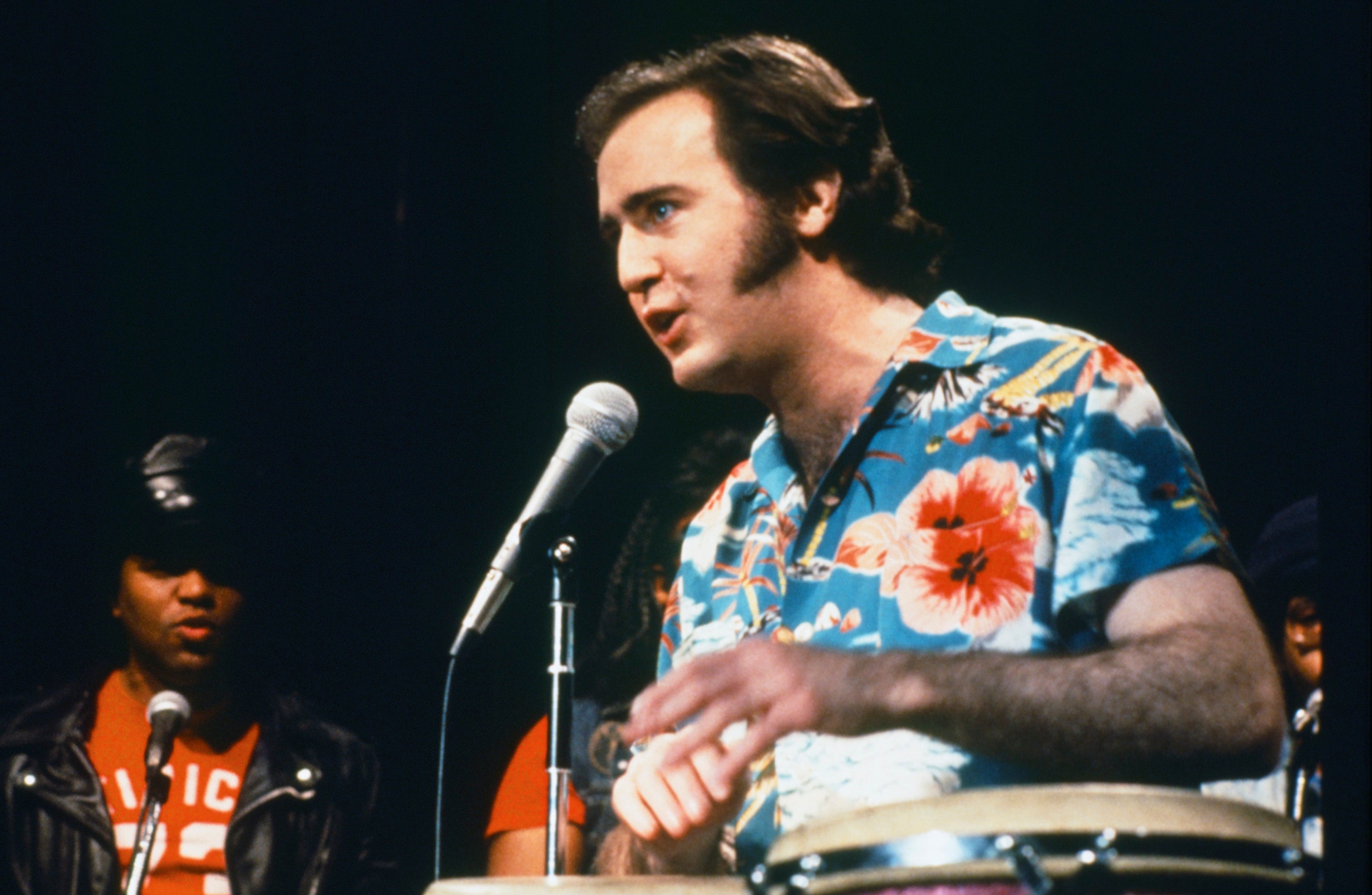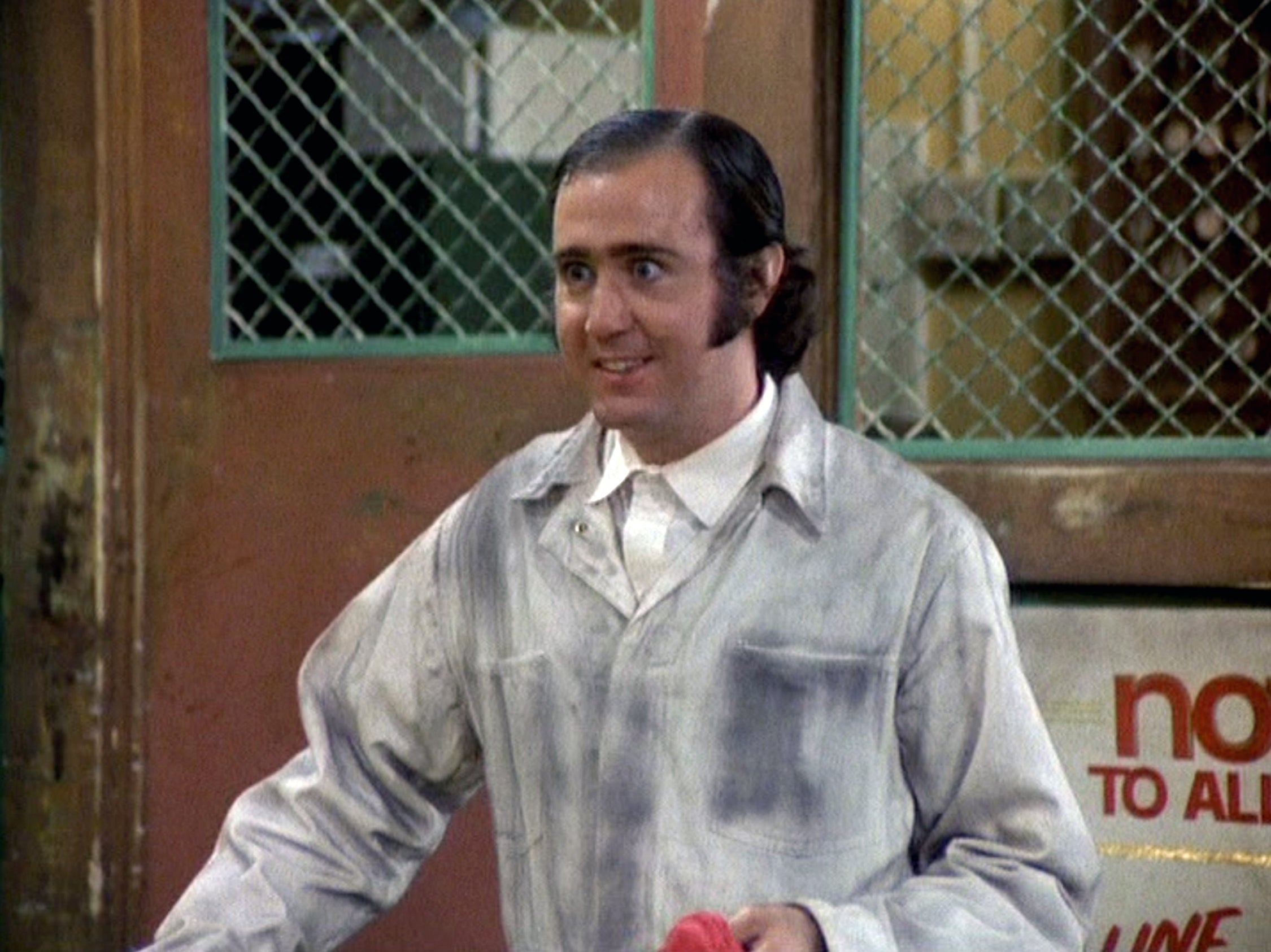Messing with reality is everything that Andy Kaufman is about,” says Bob Zmuda, early in the brilliant new documentary Thank You Very Much. Zmuda was a collaborator and confidante of Kaufman, the late comedian-cum-performance artist whose life, legacy and loose relationship with the truth is explored in Alex Braverman’s film (which opens at selected cinemas and is available digitally from 28 March). Kaufman died (officially) in May 1984 but remains to this day a point of pop cultural fascination. Those who weren’t around to witness his eccentric, avant-garde comedy routines may well have heard REM’s musical homage to him, “Man on the Moon”, or the 1999 Jim Carrey-starring biopic of the same name. Kaufman was never happier than when he was challenging his audience’s assumptions about pretty much everything. More than 40 years after his funeral, some still believe even this was part of a long con – that Kaufman had faked his own death, waiting to rise again when the punchline to his greatest prank comes due.
By the time of perhaps his crowning triumph – a headline performance at New York’s fabled Carnegie Hall in April 1979 – Kaufman had achieved his dream of becoming a TV star. He was already a regular on shows like Johnny Carson’s Tonight Show and Saturday Night Live, and starred as lovable mechanic Latka in the hit sitcom Taxi. That night at Carnegie Hall, he presented punters with the full-spectrum Kaufman experience, described by The Washington Post as “the three-ring circus inside his head”. In between performances by veteran variety acts – the Rockettes dance troupe and the Mormon Tabernacle Choir – Kaufman performed his notorious anti-comedy routines and kept the capacity audience suspended in absolute and total disbelief, unsure at any time what was real and what was hoax. Was that his grandmother onstage, watching the show from “the best seat in the house”? Nope, that’s Robin Williams in makeup and drag. Did elderly actor Eleanor Cody Gould just drop dead while recreating a frenetic dance routine from Hollywood’s Golden Age? Her rising again after Kaufman – sporting a Native American headdress – danced around her supposed corpse suggests not. But Kaufman’s offer to take the audience out for milk and cookies following the disorienting extravaganza turned out to be true: 20-odd buses waited to take punters across town for post-show snacks, a stunt that swallowed the lion’s share of the show’s $40k budget.
“Andy saw himself as an entertainer, a showbiz personality, a song-and-dance man,” says Braverman. “He once said that he’d never told a joke in his life.” Kaufman had surfaced during a golden era for US comedians, when superstar standups like Richard Pryor and George Carlin were breaking box-office records and scoring gold and platinum records with material that was challenging and political. When Kaufman joined Saturday Night Live in 1975, the NBC sketch series was known for pushing the envelope, capturing the zeitgeist and garnering equal amounts of outrage and hero worship. But, says Braverman, “Andy was very different from other comedians of his time. His work wasn’t political, he wasn’t making statements about the Vietnam war. He was into Elvis, not what was happening then, his view more nostalgic than contemporary.”
This difference was keenly apparent on SNL. The show’s in-house troupe, the Not Ready For Prime Time Players – who included future superstars Chevy Chase and John Belushi – performed hip, edgy material dialled into their generation’s attitudes towards sex, drugs and race. Kaufman’s brief segments, meanwhile, were surreal, absurdist: his “Foreign Man” persona miming along to the theme tune to Mighty Mouse, or following a series of inept celebrity impressions with a jarringly accurate Elvis Presley vamp. And while the likes of Belushi regarded the medium with cynicism – he’d told producer Lorne Michaels all TV was “crap” and that his set at home was covered in spit – Kaufman’s love for television was boundless.
Born in New York in 1949, Kaufman was raised in the glow of the cathode-ray box. His parents were Jewish, middle-class Long Islanders; as a toddler, his best friend had been his grandfather, Papu Cy. When Papu died, Kaufman was told by his parents that his grandfather had gone travelling, so young Kaufman spent his days staring sadly out of the window, waiting in vain for Papu’s return. Later, he lost himself inside what his girlfriend Lynn Margulies described as “this fantasy world”, believing there was a hidden camera in his bedroom wall and that he was broadcasting to the world. As a preteen, he became an entertainer at kids’ birthday parties; he later said those were the only happy moments of his youth.
By 16, Kaufman had run away from home and spent a year sleeping on a bench in a nearby park. “I drank heavily, smoked marijuana every day, took DMT, LSD, Dexedrine – all kinds of things,” he later explained. When this path didn’t deliver Kaufman from depression, he embraced transcendental meditation, reconciled with his family and left for Boston to study television production. His college roommate, an Iranian named Bijan Kimiachi, inspired Kaufman’s “Foreign Man”, a thick-accented, gibberish-spouting character he would perform at nightclubs. (“Foreign Man” would become the basis of Latka Gravas when Kaufman was cast on Taxi in 1978.)
The comedic shtick of “Foreign Man” has, most agree, aged incredibly badly. The root of the bit, however, lies not in racism but in witnessing a performer fail – anticipating in some ways the “cringe” comedy of the 21st century. This is why Braverman includes routines in their entirety in his documentary. “Andy’s use of time is a key element in his performance,” he explains. “You’re supposed to sit through the awkward silences, the painful interactions”. “Foreign Man” himself was rarely the butt of the joke; Kaufman often allowed him to ultimately triumph, like with his superlative Elvis impression.
Maybe the real Andy is the mosaic that comes from putting all these pieces together, like a composite sketch
But Kaufman also possessed a darker side, a self-destructive impulse that rose to power after Carnegie. Another alter ego, Tony Clifton, was a vile, obnoxious, middle-aged standup. To portray Clifton, the teetotal, vegan, non-smoking Kaufman would drink hard liquor, eat steak and smoke cigars. Braverman suspects playing Clifton – cruel in every way that Kaufman was kind – was therapeutic.
“Andy could bust out these different characters – if he wanted to be angry, he could put on the Tony Clifton costume and be angry,” says Braverman. “Maybe that was his way of dealing with the pressure of always being himself, always being ‘on’. I was never so presumptuous as to think I could find the ‘real’ Andy, but maybe the real Andy is the mosaic that comes from putting all these pieces together, like a composite sketch. Because all the characters and bits he’s doing are a real part of him.”
Being Kaufman proved such a traumatic experience that portraying him in Man on the Moon sent Jim Carrey half-insane. In the 2017 documentary Jim & Andy: The Great Beyond, about that movie’s tense production and its effect on the star, Carrey revealed that he worked so hard to inhabit Kaufman’s character that he felt he had been “possessed” by Kaufman, that Kaufman was communicating with him telepathically from beyond the grave. He later said that during the making of the movie, “No one really knew what was real or not real half the time.”

Things got out of hand when Kaufman demanded Clifton appear on an episode of Taxi: Kaufman, as Clifton, arrived accompanied by a pair of sex workers and abused his castmates to the point where the show’s lead, Judd Hirsch, demanded security get him “the f*** out of here”. Another ominous routine involved Kaufman inviting women from the audience to wrestle, offering $600 to any who could defeat him. In the documentary, pro-wrestler Robin Kelly (aka The Red Snapper) reckons Kaufman was drawn to wrestling “because it’s very sexual, a super turn-on, all about control. Andy only wrestled women because he knew it would get him laid.” Margulies acknowledges Kaufman was “a sex addict”.
As time wore on, Kaufman leaned into the villainous “heel” persona, growing more abusive and sexist in his belittling of his female opponents, telling them: “I’m gonna send you back to the kitchen, where you belong”. In these moments, and when playing Clifton, his arrogance, his misogyny, and his spitefulness seem to anticipate the tensions of our Trump era. “We see echoes of a lot of these characters in today’s political landscape,” acknowledges Braverman. “He’s poking fun at the culture wars of that era, between feminism and traditional chauvinist points of view.”
The wrestling was an extension of an earlier nightclub bit in which Kaufman would be heckled by an “audience member” (actually his friend Laurie Anderson, later a successful performance artist in her own right) and they would end up wrestling onstage. The bit could get violent – a jeopardy that both Kaufman and Anderson relished. “I loved that he’d subvert this idea of this ‘perfect’ America,” Anderson says in Thank You Very Much. “We live in the most violent country in the world. Andy was a mirror, and people didn’t like what they saw a lot of the time.”

Indeed. In 1982, Taxi ended, as did Kaufman’s time at SNL. “By then, David Letterman was the only person who’d have him on,” notes Braverman. Kaufman was seemingly exiled from his happy place – the television set – and his big foray into movies (the universally panned comedy Heartbeeps) had sunk like a stone. But still, he continued to prank. “Lynn talks about how they’d pull up at the traffic light and he’d pretend to choke her, just for the benefit of the person in one car over that didn’t know that they were watching a performance,” says Braverman. “To be kicked off a TV show was not failure for him, it’s an evolution of the act. His friend Dennis Raimondi said Andy was like a jazz musician, always improvising. So he’s been kicked off a TV show – what’s next? Where are we taking the performance from here?”
For their next trick, Kaufman and Zmuda planned on faking his death. Braverman’s documentary includes audio from a phone call where Kaufman questions whether people will hate him “once it turns out I’m really alive”; Zmuda suggests Kaufman fake his own death every few months, “and then when you really die, nobody will believe it. You’ll be immortal.”
But Kaufman wasn’t immortal, and before they could put the hoax into motion, he was diagnosed with aggressive lung cancer. His friends struggled to believe it, a disbelief that, for some, perpetuated beyond his death in May 1984, at the age of just 35. Carol Kane, his Taxi co-star, poked his corpse at the funeral because she didn’t believe he was truly dead.
Conspiracy theories surrounding Kaufman’s death continue to this day, and Braverman knows it wouldn’t be in the Andy spirit to pop that balloon. “We didn’t want to answer the question definitively,” he nods. “I like the way we handled it: to show that he was working on faking his own death when he legitimately, actually got sick.” The truth, it seems, was even stranger than fiction. But, ultimately, nothing is stranger than Andy Kaufman was.
Can Michael Jackson’s music survive the accusations against him? It’s complicated
How O Brother, Where Art Thou? got inspired – then upstaged – by its own soundtrack
How I unmasked one of the greatest art world hoaxes of all time
Baked bean baths, Tina Turner and Elton John on stilts? The inside story of Tommy
Gwyneth Paltrow has got it wrong – intimacy coordinators are here to stay
‘I get PTSD when I watch it’: The inside story of the outrageous music doc Dig!







